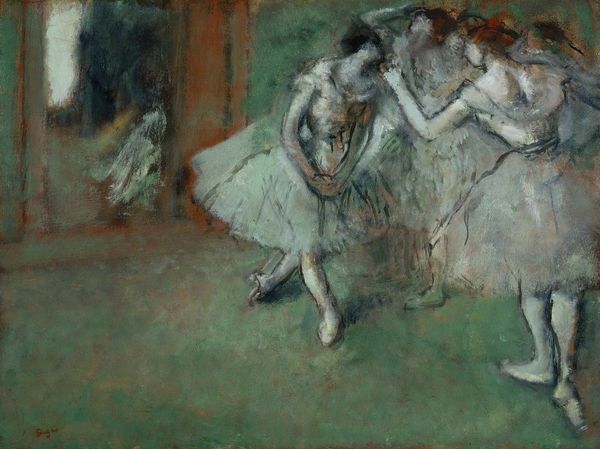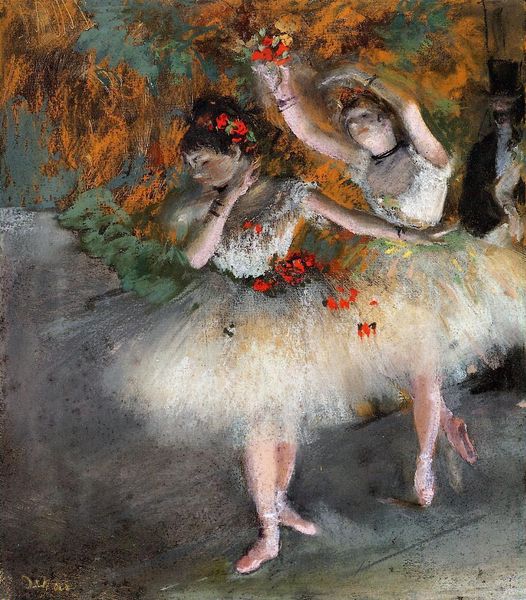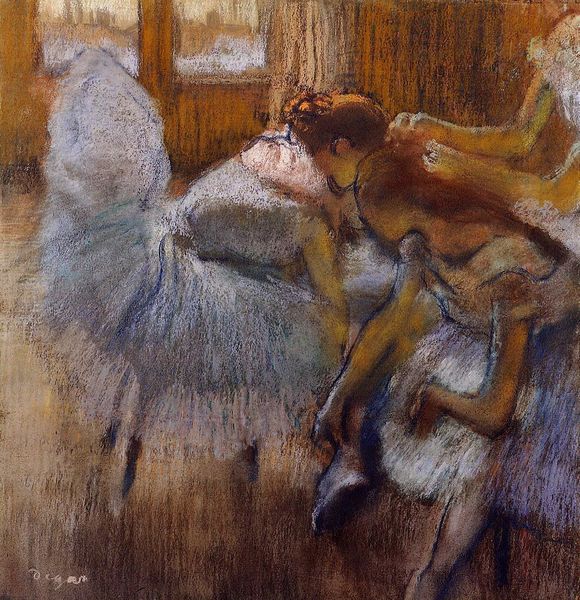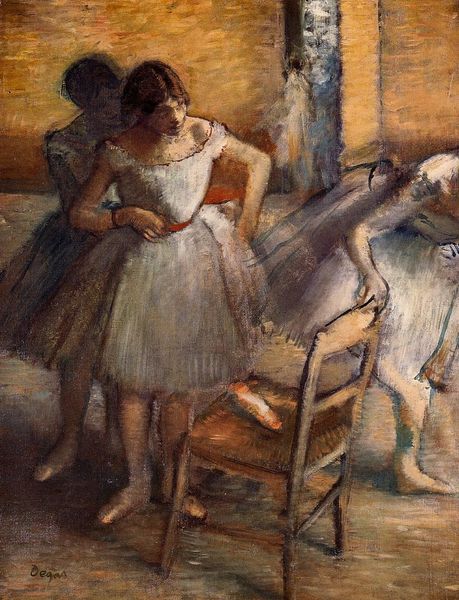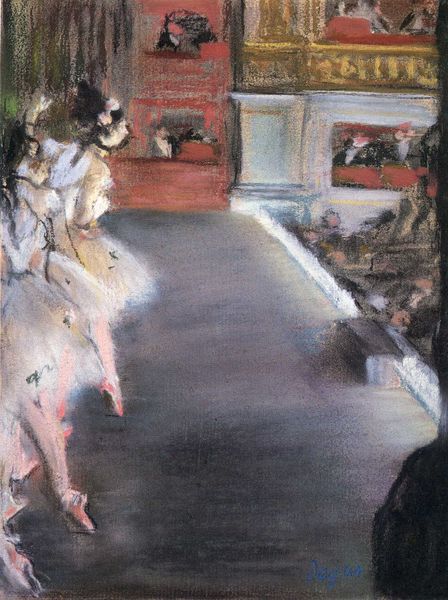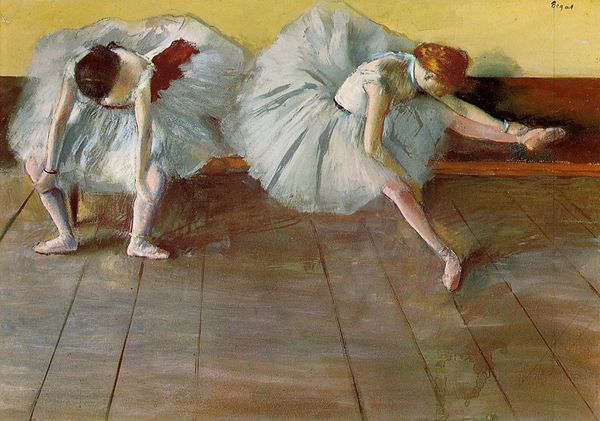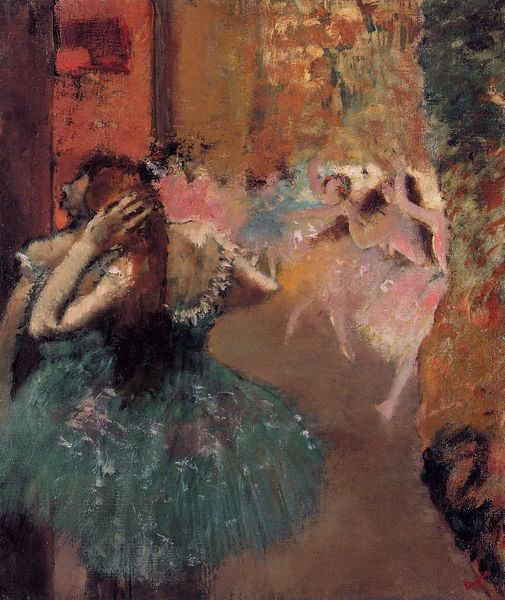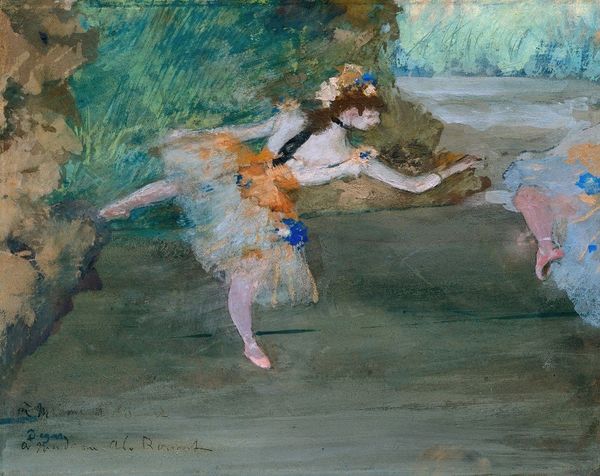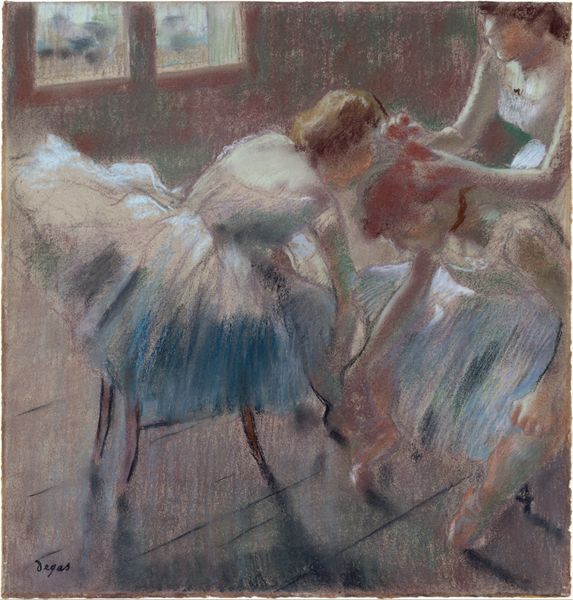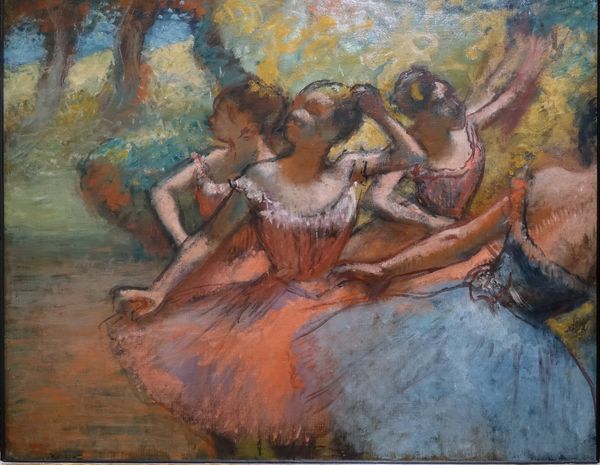
Copyright: Public domain
Curator: Looking at Edgar Degas’s “Ballet Dancers,” crafted around 1900 and now residing at the National Gallery, one is immediately drawn to the subdued elegance of the scene. What is your impression? Editor: It feels like a captured fragment, almost dreamlike. The soft edges and muted palette give a sense of transience, like a memory fading at the edges. It’s as if we are peeking into a private world, one of delicate movements and quiet preparation. Curator: Absolutely. Degas was fascinated by capturing not just the performance, but the moments surrounding it – the reality behind the stage glamour. In many cultures, the dancer embodies grace but also discipline and even sacrifice. Do you feel this painting hints at that duality? Editor: The blurred forms and the lack of distinct detail seem to soften the potential rigor. However, notice the ballerina in the foreground, diligently adjusting her slipper. Her posture speaks volumes about dedication, about striving for perfection. The composition emphasizes the repetition of forms, subtly suggesting the rigorous practice ballet demands. Curator: You have an interesting point there about that specific posture. Red is another recurrent component here: its usage appears at the level of hair knots, and those tiny details enhance the emotive potential of the portrayed group. That splash of color creates a focal point, leading our eyes through the canvas in a subtle yet impactful manner. Editor: True, that single spot of vibrant red draws the eye. Technically, it functions almost as a repoussoir, guiding our vision into the hazy depth of the backstage scene. Degas truly masters this, it provides compositional depth! Curator: It’s interesting to consider how Degas uses the impressionistic style to not only capture a visual scene, but also to evoke feelings and associations tied to this particular subject and, broadly speaking, linked to the artist’s cultural context. The ballet, with its rich history and symbolism, certainly gave Degas an evocative set of references to play with. Editor: Indeed. By abstracting the dancers into almost ethereal figures, Degas highlights the delicate and fleeting nature of the performance itself. And thinking about materials, what strikes me is how the textures of oil paint contributes to create this effect. The materiality itself emphasizes those notions. Curator: By considering Degas' choice of subject, color, and composition we are left reflecting on the multiple layers within “Ballet Dancers,” going beyond merely the visual. Editor: Precisely, seeing not just dancers, but the essence of dedication and ephemeral beauty captured in a fleeting, painterly moment.
Comments
No comments
Be the first to comment and join the conversation on the ultimate creative platform.
